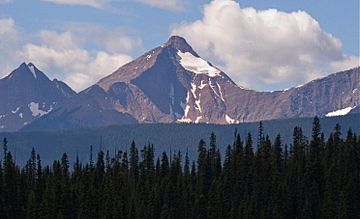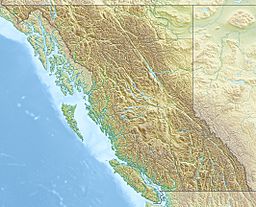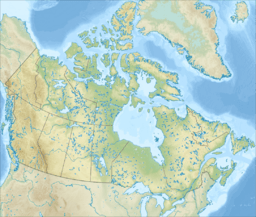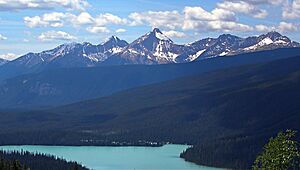Mount King (British Columbia) facts for kids
Quick facts for kids Mount King |
|
|---|---|

Mount King
|
|
| Highest point | |
| Elevation | 2,868 m (9,409 ft) |
| Prominence | 468 m (1,535 ft) |
| Parent peak | Mount Deville (2889 m) |
| Geography | |
| Location | British Columbia, Canada |
| Parent range | Van Horne Range Canadian Rockies |
| Topo map | NTS 82N07 |
| Geology | |
| Age of rock | Cambrian |
| Type of rock | sedimentary rock |
| Climbing | |
| First ascent | 1892 James J. McArthur |
Mount King is a tall mountain in Yoho National Park, located in the Canadian Rockies in British Columbia, Canada. It stands about 2,868 meters (9,409 feet) high. Mount King is part of the Van Horne Range, which has some of the oldest mountains in the Rockies. Because they are so old, these mountains have been worn down a lot by weather over time.
The closest higher mountain is Mount Deville, which is about 5 kilometers (3.1 miles) to the northwest. Mount King is a well-known landmark. You can see it from Highway 1, also known as the Trans-Canada Highway, especially in the Kicking Horse valley and Kicking Horse Pass areas. The mountain is located about 14 kilometers (8.7 miles) southwest of Emerald Lake. It is also 13 kilometers (8.1 miles) southwest of the town of Field, British Columbia.
Contents
The Story Behind Mount King's Name
How Mount King Got Its Name
The name "Mount King" was given to the mountain in 1886. It was named by a person named Otto Julius Klotz. He chose the name to honor William Frederick King (1854–1916). William Frederick King was an important Canadian figure. He worked as a surveyor, which means he measured land. He was also an astronomer, studying stars and planets, and a civil servant, working for the government.
First Climbers and Official Recognition
The very first ascent of Mount King happened in 1892. A climber named James J. McArthur was the first person to reach its summit. The mountain's name became official much later, in 1924. This happened when the Geographical Names Board of Canada approved it.
Understanding Mount King's Geology
How Mount King Was Formed
Mount King is made up of a type of rock called sedimentary rock. This rock was formed a very long time ago, during a period known as the Cambrian period. During that time, the area was covered by shallow seas. Over millions of years, layers of sand, mud, and tiny bits of shells settled at the bottom of these seas. These layers slowly hardened into sedimentary rock.
The Laramide Orogeny's Impact
Later, a major event called the Laramide orogeny occurred. This was a time when huge forces deep within the Earth pushed and folded the land. During this process, the sedimentary rock that makes up Mount King was pushed eastward. It even moved over the top of younger rock layers. This is how the mountain we see today was created.
Mount King's Climate and Weather
Weather Patterns Around Mount King
Mount King is located in a subarctic climate zone. This means the area experiences very cold and snowy winters. The summers, however, are usually mild. Temperatures during winter can drop below −20 °C (–4 °F). With the wind chill, it can feel even colder, sometimes below −30 °C (–22 °F).
Water Flow from the Mountain
When snow melts or rain falls on Mount King, the water flows off the mountain. This water then drains into smaller streams and rivers. These smaller waterways are called tributaries. They eventually join the Kicking Horse River. The Kicking Horse River itself is a tributary of the larger Columbia River.




